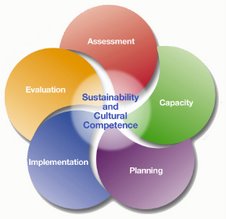The State of Our Community
The assessment phase of the CTC process included an analysis of the 2004 Communities That Care® Youth Survey data for 842 6th, 8th and 10th grade students in Hartford Public Schools. The survey was implemented in ten North Hartford schools: Weaver High, Lewis Fox Middle, J. C. Clark, Annie Fisher, Martin Luther King, Milner, Sarah J. Rawson, Simpson-Waverly, Mark Twain and Fred D. Wish elementary. In addition to quantifying levels of alcohol, tobacco and other drug use and other antisocial behaviors, the survey measures sixteen research-based risk factors and nine protective factors.
Hartford Communities That Care (HCTC) Community Board identified three priority risk factors that represented significant challenges to the healthy development of youth in the North Hartford’s Blue Hills, Northeast and Upper Albany neighborhoods. The priority risk factors include: 1) Friends Who Engage in Delinquent Behavior 2) Low Neighborhood Attachment and Community Disorganization, and 3) Transitions and Mobility. Risk factors are conditions in young people’s community, family, school, peer group, or within youth themselves that increase the likelihood of adolescent problems, such as substance abuse, delinquency, school dropout, teen pregnancy and violence.
In addition, numerous areas of strength were identified. Community strengths were indicated by high levels of the following protective factors: 1) Belief in the Moral Order, 2) School Rewards for Prosocial Involvement, 3) Family Opportunities for Prosocial Involvement, and 4) School Opportunities for Prosocial Involvement. Protective factors are conditions in these same areas of influence that buffer young people from exposure to risk.



No comments:
Post a Comment